Pip-boy in reality: computers on the forearm
Fallout Pip-Boy remembers everything. And some - they want such a device for themselves, although, you see, it is not at all convenient to wear it. And the same people can talk about the uselessness of modern smart watches - it's in the atmosphere of a cyberpunk.
Devices of the same format were and are in reality, but they often represent a highly specialized gadgets for representatives of certain professions. Under the cut - a few examples.
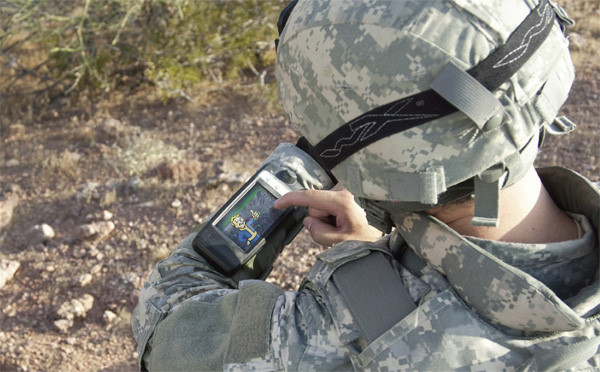
One of the first computers in the Pip-Boy style form factor was highly specialized gadgets for divers. You can, of course, compare this 1959 device with conventional compasses and other gadgets of a similar form factor already available at that time since the 1920s. And yes, this is not a digital device in the photo, but it has become the progenitor of a huge number of submarines existing today.
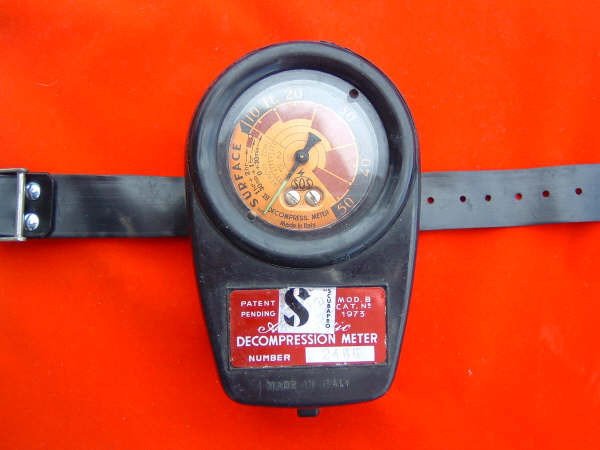
EON Steel, released in 2014, shows depth, dive time, oxygen level in cylinders and other useful data. This is just one of the examples of modern devices of this type. It should be said that on one charge this device will work up to 40 hours at a depth of up to 150 meters. The device has a TFT display with a resolution of 240x320 pixels and weighs 347 grams.
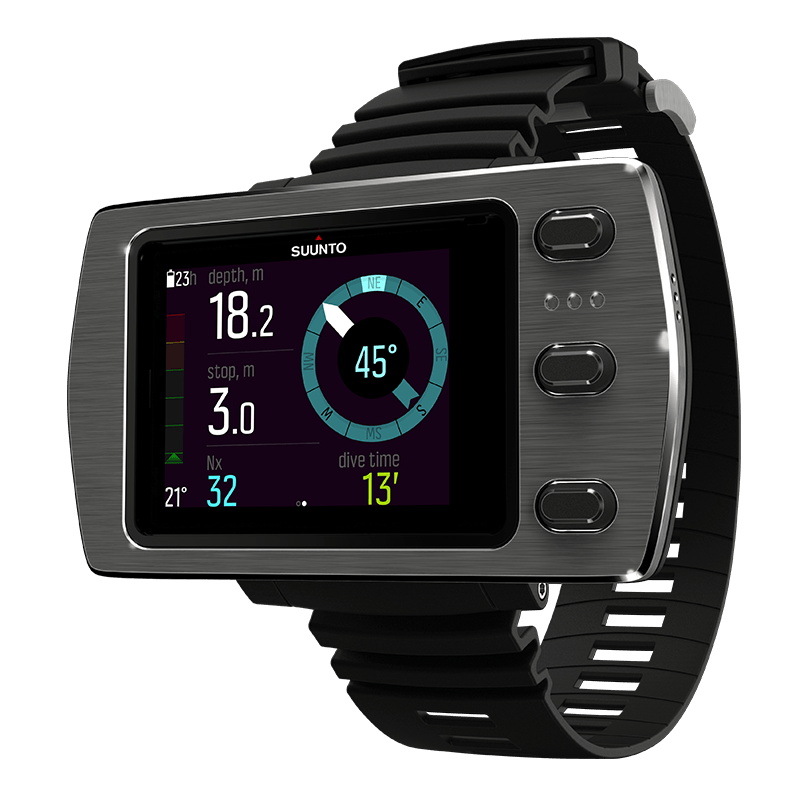
In 1985, the Japanese company Seiko released its second “smart watch” - the wrist terminal Seiko UC-2000, which can synchronize with popular at that time personal computers, including Apple II and II +, Commodore 64, IBM PC, NEC 8201, Tandy Color Computer and by others, some of which you will find in this article . But this gadget is not very similar to Pip-Boy, so let's talk about other examples.
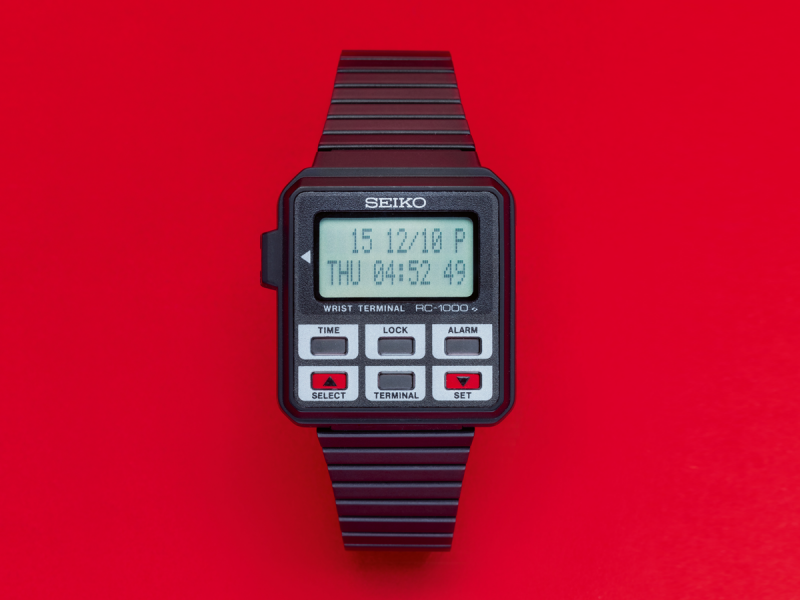
Wearable computer Zypad WR1100 was created in 2008 specifically for working in difficult conditions, when the user needs to have hands free. It has a case protected from dust, moisture and shock, runs on Linux, has a 3.5-inch touch screen with a resolution of 640x480 pixels. Above the screen specifically worked to make the image visible in direct sunlight.
The gadget was also equipped with a GPS, an electronic compass, a biometric protection - a fingerprint sensor, and a battery saving system - the screen did not work when the arm was hanging along the body.
The device is based on a Marvell PXA 270 416 MHz processor, has 256 megabytes of RAM and 128 megabytes of internal memory, which can be expanded using microSD. The Zypad WR1100 weighs 650 grams, so you need strong arms to carry it.


In 2010, a dozen American soldiers received for testing different versions of the same device, made by LG Display, Universal Display and L-3 Display Systems UDC. A computer with a curved 4.3-inch touchscreen display was mounted on the forearm - and it is very similar to the Pip-Boy with a slightly lower level of cyberpunk.
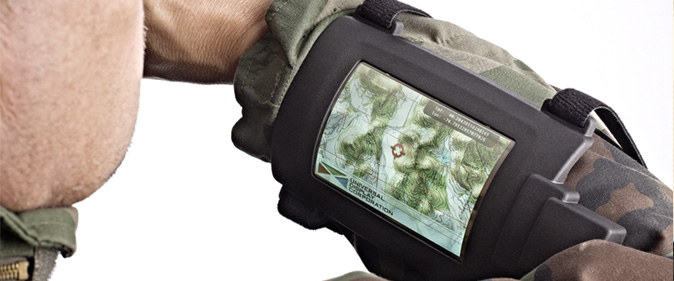
The new version of the Zypad - model WL1500 - was released in 2010-2011. Manufacturers again focused not on the mass market. This time, the target audience was corporate clients in the face of medical institutions and other professions who need portable mobile gadgets to keep their hands free. The device is based on a processor with a frequency of 400 MHz, equipped with a 3.5-inch screen with a resolution of 320x240, supports Wi-Fi, Bluetooth and GPS.
The device worked on Windows CE 6.0.
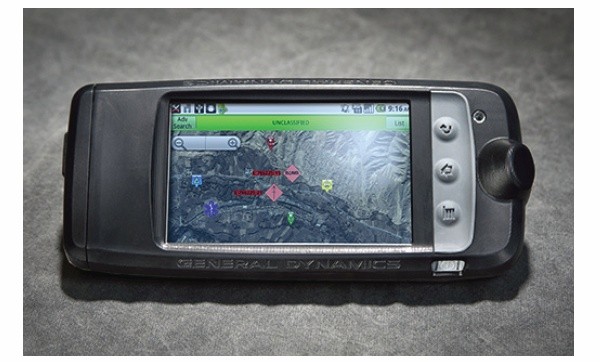
In 2012, went to AfghanistanGeneral Dynamics GD300 gadgets running on an Android-based operating system. The device is based on the ARM Cortex A8 600 MHz processor, has 256 megabytes of RAM and 8 gigabytes of built-in, and only a 3.5-inch display with a resolution of 800x480, which responds to touches in gloves and is visible in sunlight.

In 2012, a huge wrist phone came out on Android 2.2 - Watch SmartPhone with a 2-inch display. The gadget was also equipped with a 2 megapixel camera. It was possible to call on it - there was a built-in microphone, a speaker and a wireless headset.
The processor of the device - with a frequency of 426 MHz, the screen resolution - 320x240 pixels, 262 megabytes of internal memory, which can be expanded with the help of MicroSD up to 8 gigabytes.
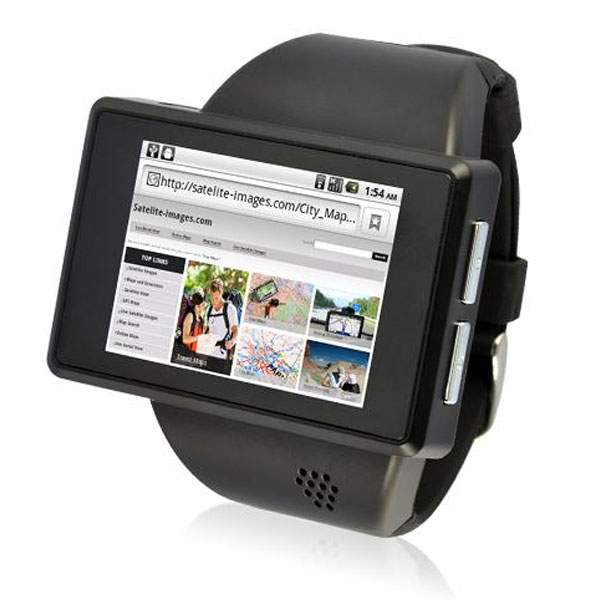
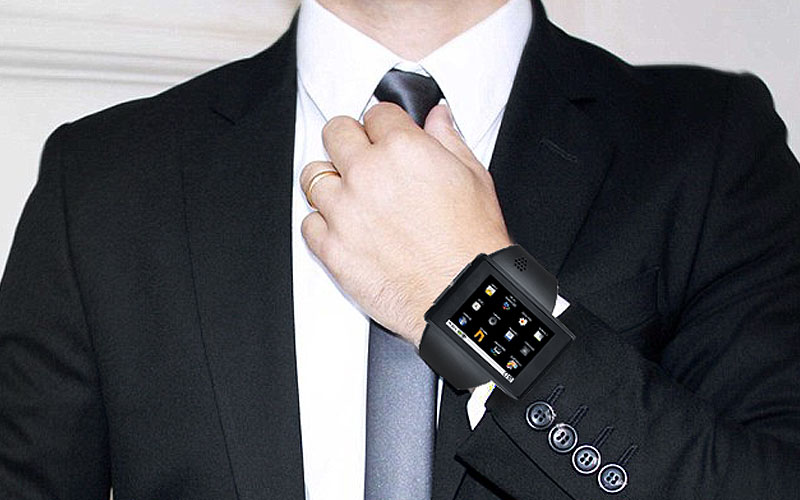
Motorola WT4090 Data Collection Terminal is a device designed for warehouse workers. It can fall from a height of up to 1.2 meters and supports text and voice equipment and has a 2.8-inch display. This gadget can work at temperatures up to -20 ° C, that is, even in freezers.
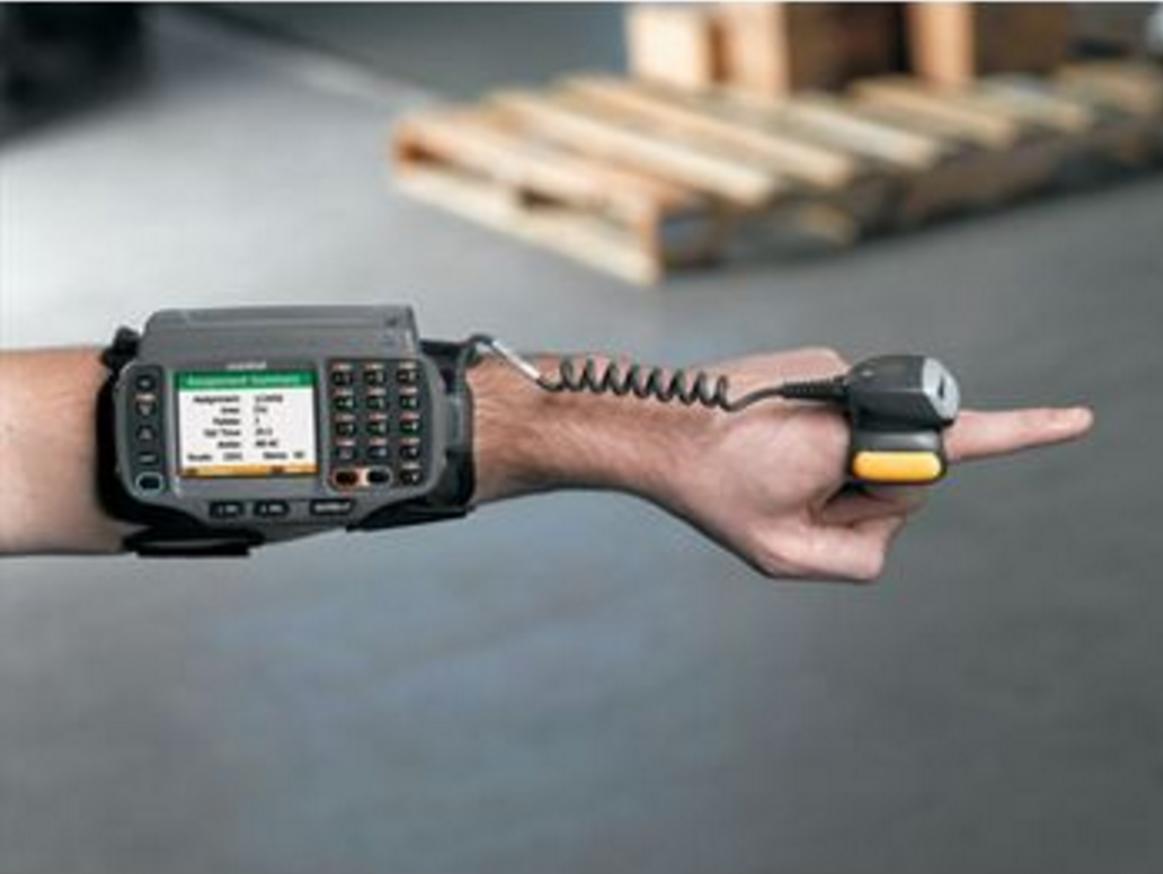
These are just a few examples of using this form factor to create portable computers that can free up the user's hands and help with certain tasks, whether working with goods in a warehouse or targeting fighters to a target. At the moment, computers on the wrist did not become the property of the mass market, in contrast to smart watches, not so highly specialized gadgets. The whole reason is that wrist computers are not very convenient for the average consumer, because we are used to the watch, and wearing 350-650 grams on the forearm, especially in winter, is not a pleasant job.
Devices of the same format were and are in reality, but they often represent a highly specialized gadgets for representatives of certain professions. Under the cut - a few examples.

One of the first computers in the Pip-Boy style form factor was highly specialized gadgets for divers. You can, of course, compare this 1959 device with conventional compasses and other gadgets of a similar form factor already available at that time since the 1920s. And yes, this is not a digital device in the photo, but it has become the progenitor of a huge number of submarines existing today.

EON Steel, released in 2014, shows depth, dive time, oxygen level in cylinders and other useful data. This is just one of the examples of modern devices of this type. It should be said that on one charge this device will work up to 40 hours at a depth of up to 150 meters. The device has a TFT display with a resolution of 240x320 pixels and weighs 347 grams.

In 1985, the Japanese company Seiko released its second “smart watch” - the wrist terminal Seiko UC-2000, which can synchronize with popular at that time personal computers, including Apple II and II +, Commodore 64, IBM PC, NEC 8201, Tandy Color Computer and by others, some of which you will find in this article . But this gadget is not very similar to Pip-Boy, so let's talk about other examples.

Wearable computer Zypad WR1100 was created in 2008 specifically for working in difficult conditions, when the user needs to have hands free. It has a case protected from dust, moisture and shock, runs on Linux, has a 3.5-inch touch screen with a resolution of 640x480 pixels. Above the screen specifically worked to make the image visible in direct sunlight.
The gadget was also equipped with a GPS, an electronic compass, a biometric protection - a fingerprint sensor, and a battery saving system - the screen did not work when the arm was hanging along the body.
The device is based on a Marvell PXA 270 416 MHz processor, has 256 megabytes of RAM and 128 megabytes of internal memory, which can be expanded using microSD. The Zypad WR1100 weighs 650 grams, so you need strong arms to carry it.


In 2010, a dozen American soldiers received for testing different versions of the same device, made by LG Display, Universal Display and L-3 Display Systems UDC. A computer with a curved 4.3-inch touchscreen display was mounted on the forearm - and it is very similar to the Pip-Boy with a slightly lower level of cyberpunk.

The new version of the Zypad - model WL1500 - was released in 2010-2011. Manufacturers again focused not on the mass market. This time, the target audience was corporate clients in the face of medical institutions and other professions who need portable mobile gadgets to keep their hands free. The device is based on a processor with a frequency of 400 MHz, equipped with a 3.5-inch screen with a resolution of 320x240, supports Wi-Fi, Bluetooth and GPS.
The device worked on Windows CE 6.0.

In 2012, went to AfghanistanGeneral Dynamics GD300 gadgets running on an Android-based operating system. The device is based on the ARM Cortex A8 600 MHz processor, has 256 megabytes of RAM and 8 gigabytes of built-in, and only a 3.5-inch display with a resolution of 800x480, which responds to touches in gloves and is visible in sunlight.

In 2012, a huge wrist phone came out on Android 2.2 - Watch SmartPhone with a 2-inch display. The gadget was also equipped with a 2 megapixel camera. It was possible to call on it - there was a built-in microphone, a speaker and a wireless headset.
The processor of the device - with a frequency of 426 MHz, the screen resolution - 320x240 pixels, 262 megabytes of internal memory, which can be expanded with the help of MicroSD up to 8 gigabytes.


Motorola WT4090 Data Collection Terminal is a device designed for warehouse workers. It can fall from a height of up to 1.2 meters and supports text and voice equipment and has a 2.8-inch display. This gadget can work at temperatures up to -20 ° C, that is, even in freezers.

These are just a few examples of using this form factor to create portable computers that can free up the user's hands and help with certain tasks, whether working with goods in a warehouse or targeting fighters to a target. At the moment, computers on the wrist did not become the property of the mass market, in contrast to smart watches, not so highly specialized gadgets. The whole reason is that wrist computers are not very convenient for the average consumer, because we are used to the watch, and wearing 350-650 grams on the forearm, especially in winter, is not a pleasant job.
